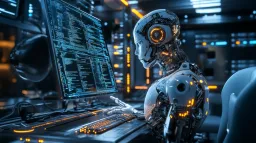What is AI poisoning? How does it work on AI art?
In the digital age, the intersection of art and artificial intelligence (AI) has sparked both innovation and controversy. As AI technologies like DALL-E, Midjourney, and Stable Diffusion become increasingly capable of generating sophisticated images, artists have raised concerns about their work being used without permission to train these models.
The issue at hand is not just about copyright infringement but also about the ethical implications of AI's role in creative processes. In response, researchers and artists alike have begun to devise methods to protect artistic creations from being exploited by AI companies.
The Rise of "Anti-AI Poison"
At the forefront of this movement is a novel technique developed by researchers at the University of Chicago, known as "anti-AI poison." This method involves subtly altering the pixels in an image in ways that are undetectable to the human eye but can significantly mislead AI models. Tools like Nightshade and Glaze are examples of this approach, designed to embed invisible disruptions within digital artwork. Such disruptions are carefully crafted to impair AI models' ability to accurately label or replicate images, causing the AI to learn incorrect associations—transforming, for example, an image of a dog into a cat in the AI's "mind."
Nightshade: A Powerful Deterrent

Nightshade messes with AI training by manipulating image pixels to misguide machine learning models. It represents a targeted attack on the security vulnerability of generative AI models, which rely heavily on vast datasets scraped from the internet. If an AI model is trained with enough poisoned images, its output becomes increasingly distorted, undermining the model's reliability and effectiveness. This data poisoning tool, developed under the guidance of Ben Zhao, aims to shift the power dynamics, providing artists with a means to deter AI companies from unauthorized use of their work.
Glaze: Masking Artistic Style
Glaze complements Nightshade by allowing artists to "mask" their unique style, making it harder for AI to replicate or utilize their work without consent. This tool alters the stylistic signature of artwork, thereby protecting the artist's intellectual property while still enabling them to share their creations online. The integration of Nightshade into Glaze represents a comprehensive approach to safeguarding digital artwork from AI exploitation.
Read on: what is Glaze? How does it work?
Ethical and Legal Implications
The deployment of anti-AI tools like Nightshade and Glaze raises significant ethical and legal questions. It underscores the ongoing battle over copyright and intellectual property rights in the digital realm. While these tools offer a form of resistance against the commodification of art by AI, they also highlight the need for legislative and regulatory frameworks that recognize and protect the rights of creators in the age of artificial intelligence.
The initiative taken by artists and researchers signals a growing demand for AI companies to respect artistic rights and seek consent before using artworks to train their models. The effectiveness of anti-AI poison not only serves as a protective measure for artists but also as a catalyst for change, urging tech companies to adopt more ethical practices in their operations.
The intersection of art and AI presents both challenges and opportunities for creative expression. As AI continues to evolve, the dialogue between artists, technologists, and policymakers must also advance to ensure that innovation does not come at the expense of artists' rights and ethical considerations.
Tools like Nightshade and Glaze represent a critical step in empowering artists, but the ultimate solution may lie in broader systemic changes that align technological advancement with the protection of intellectual property and artistic integrity.









